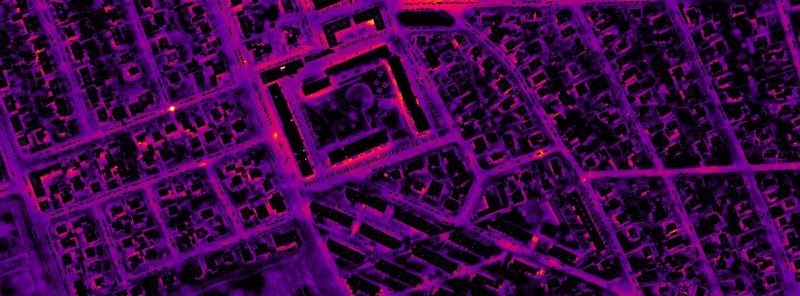Solution provider

Case
Buildings
District cooling
District energy
+7


Add the case to your visit request and let us know that you are interested in visiting Denmark
SAVING TIME AND MONEY
The use of slow, partial or semi-reliable data to map the state of district heating networks is coming to an end. Drones, a few years ago only buzzing in the imagination of innovative engineers, are now making a significant role for themselves in district energy network maintenance.
The new solution offers the possibility of reduced heat losses, thus reducing CO2 emission. The district heating plant saves money by effectively minimizing losses of water and energy, and – at the same time – obtains a tool to create an overview of the grid, enabling fact-based enhancement of repair and maintenance routines. The real benefactors, of course, are the customers receiving cheaper and more reliable heating.
THE THERMAL IMAGES
Significant leaks in the hot water pipes show up on the thermal images as bright spots for everyone to see. Smaller leaks and other hot spots (like potential leaks) have to be identified by a trained specialist in thermal image analysis. With drones, it is possible to identify leaks as small as 1 m3 per 24 hours. Leaks and other hot spots are localized with a precision of 20-30 cm, depending on the circumstances.
ORTHOGRAPHIC MAPS – THE WHOLE NETWORK IN ONE GLANCE
As a unique possibility, comprehensive thermal orthographic maps can be created, covering an entire city or specific areas. An orthographic map typically consists of several thousand thermal images put together into one large image. This provides an exceptional overview.
With a radiometric orthographic thermal map, it is possible to view the entire network in one glance. No more small, solitary pictures, but everything in one visual go! And still, it is possible to zoom in and to activate the data-analysis and the different categories: What am I looking at here? Components like valves, bends, branch joints, and other details will stand out. In cases where the pipes are close to the surface, the entire line of a pipe will be visible, making checks and adjustments to the grid registration possible.